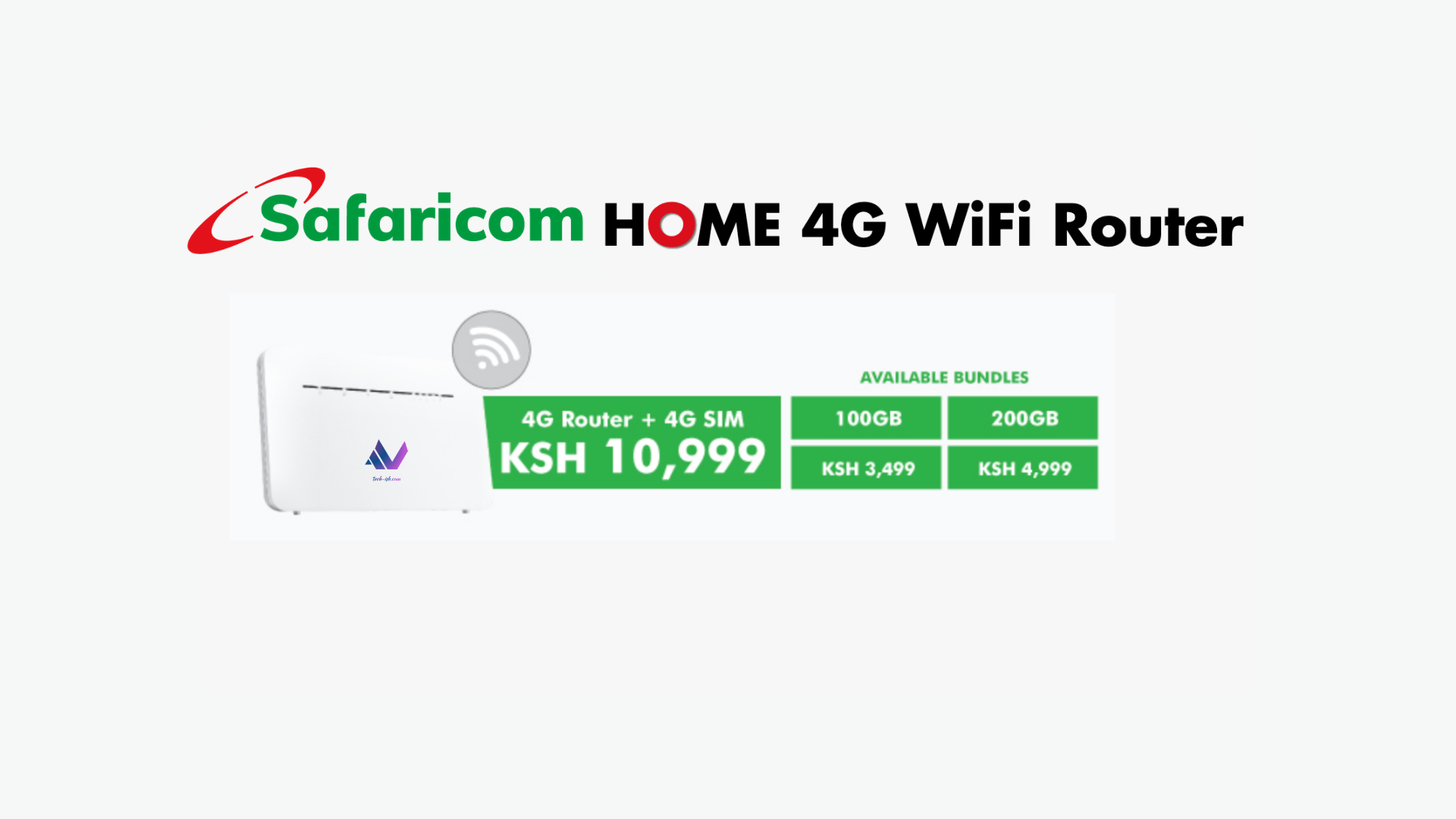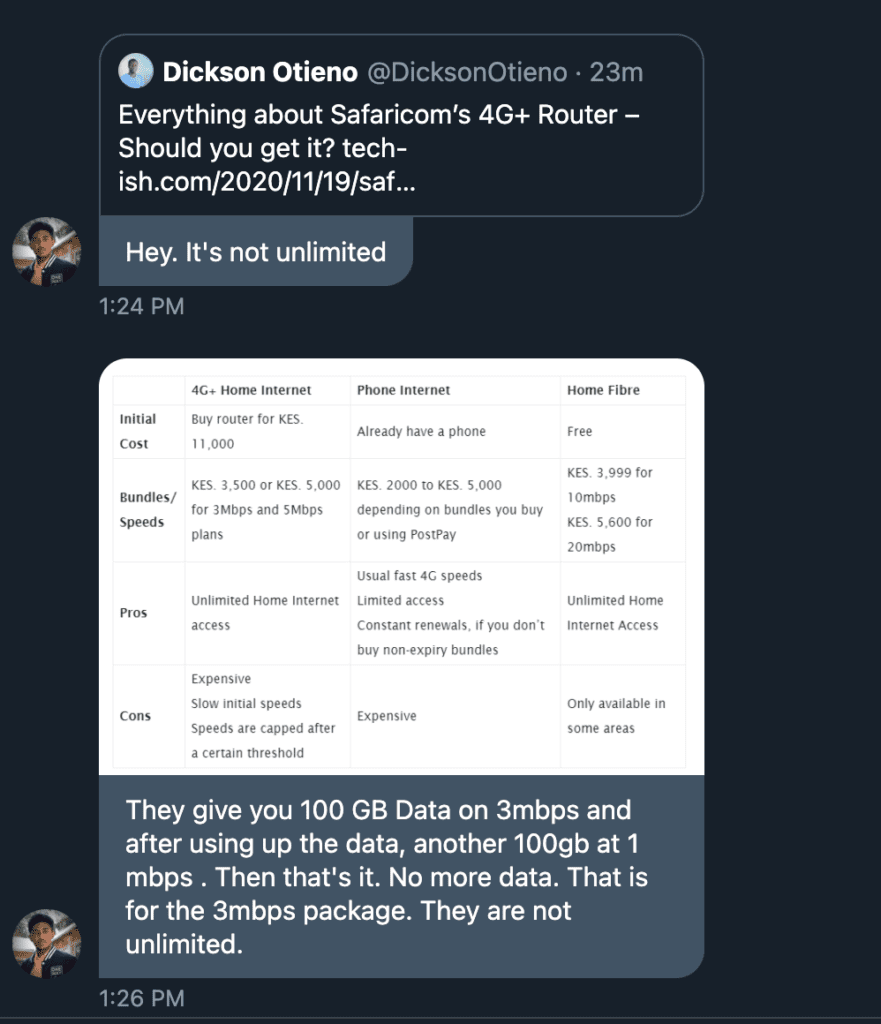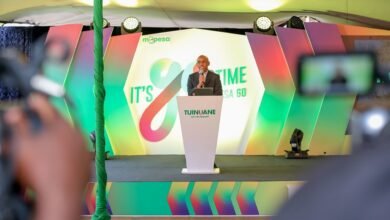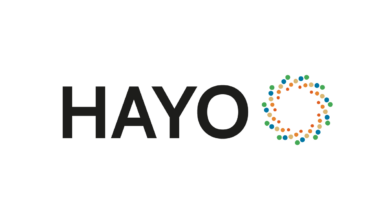
If you’re looking for a home internet solution, you know you have two options. Wired. Or Wireless. While the wired solution is always cheaper and offers unlimited connectivity with no caps on how much one can use, it is not available everywhere. That’s why you only find say Safaricom Home Fibre, or JTL, or Zuku in certain towns, or suburban settings. It takes time to lay down the fibre cables and pull the connection to different homes. That’s why for most Kenyans, the wireless solution is the only way to go.
Wireless, however, has its own restrictions. Or rather, shortcomings. It is a limited resource. Meaning, there are only so many bytes that can be sent per second. Which means if everyone has access to the resource in an unlimited manner, there will be congestion. That’s why there needs to be control of the resource. And this is done in terms of buying bundles or limiting speeds after a certain amount of data has been used.
Safaricom has both wired and wireless home internet solutions. Their wired Home Fibre solution recently beat Zuku Fibre in the number of homes installed. There are different packages which offer unlimited access. I use the KES. 3,999 which gives me 10Mbps (currently doubled to 20Mbps) without any restrictions throughout. Setting up is free, and all you do is call 400 and get them to install it in your house – but you must live in an apartment/area where the fibre is already setup.
The company also has wireless solutions in the following forms:
- The usual 4G network you can access on your phone, and buy data through *544#
- The Safaricom Big Box 2 Android TV – which I reviewed here that offers both smart TV access, and home internet through the 4G embedded SIM card.
- Safaricom internet for business which I’ve seen some people install in their homes, but is pretty expensive at KES. 5,499 for 5Mbps, and KES. 14,999 for 10Mbps. It is also hard to get this installed at your home because of the requirements, including a KRA Pin, and much more.
- The new Safaricom 4G+ WiFi Router.
The Home 4G+ Router:
Of course, coming from the explanation in paragraph two, you know there definitely are certain restrictions with this solution. Let’s see the initial cost of getting this solution:
- First, you need to buy the router and its SIM card from Safaricom. That costs KES. 11,000 for some reason. I think this is the most expensive 4G router in the market. The Airtel Home internet router costs KES. 7,500.
- You should only make this purchase after making sure you live in an area where the Safaricom network performs very well, so as not to get bad speeds. Safaricom has promised to have 100% 4G coverage by end of the year anyway.
- Also, since the router needs to be connected to power, you need to have a setup where it can be placed in the house.
- Also, you should only get the router if you believe either 3Mbps or 5Mbps is enough for your workflow (I’ll explain this below).
Once you have the router in your house, you have to choose between Safaricom’s packages. There are two main packages that both offer unlimited internet based on fair usage. I didn’t know this myself after checking out the website, because what’s listed there is bundles. However, Safaricom has explained via a Twitter conversation that the two packages listed also determine speed.
So for the 100GB bundle, you get 3Mbps speeds. And for the 200GB bundle, you get 5Mbps speeds. (Explanation here: your speed will be limited to 3Mbps or 5Mbps even though 4G/LTE speeds can reach over 30Mbps on the Safaricom network) AND, once you use up the 100GB or 200GB, these speeds are then further capped down to 1Mbps, in what’s called fair usage policy.
The prices are set as so
- 100GB for KES. 3,500 – you get 3Mbps for the first 100GB, then 1MBps later on.
- 200GB for KES. 5,000 – you get 5Mbps for the first 200GB, then 1Mbps later on.
Update: The bundles are not unlimited according to this shared information:

Thoughts on this:
I called the Airtel router dumb because it was big, not portable, plus it didn’t offer any unlimited access. It was also expensive in terms of initial acquisition cost. Here’s the dilemma now with this Safaricom router. It is more expensive than Airtel’s. It is also not very portable. However, Safaricom approaches things differently in three ways:
- First, you are using the internet at certain speeds, not the full 4G/LTE speeds.
- Secondly, there is unlimited access even after the bundles are used up, even though at slower speeds. (According to the new information updated, this isn’t true)
- Thirdly, there’s no other 4G plan from Safaricom that competes with the router’s plans.
Airtel’s router competed directly with Airtel’s own UnlimiNet plans as I explained in that article. With Safaricom, there’s nothing that directly competes with the 100GB or 200GB offers which remember are limited to 3mbps and 5mpbs respectively. Also, on Airtel, 40GB was KES. 2,000, 70GB was KES. 3,000 while 100GB was KES. 4,000. Though here you could access full 4G/LTE speeds, it ended up feeling quite expensive given there was no internet access after the bundles were used up.
However, this isn’t to say I recommend Safaricom’s router. Nope. The KES. 11,000 initial cost is just too much for a router that you’ll never use once you realise the plans may be either too slow, or too expensive for you, or that you’re better off using normal bundles until something better comes up.
This table breaks down everything you need to know about the Safaricom 4G+ Home Internet router compared to other Home Internet solutions:
| 4G+ Home Internet | Phone Internet | Home Fibre | |
| Initial Cost | Buy router for KES. 11,000 | Already have a phone | Free |
| Bundles/ Speeds | KES. 3,500 or KES. 5,000 for 3Mbps and 5Mbps plans | KES. 2000 to KES. 5,000 depending on bundles you buy or using PostPay | KES. 3,999 for 10mbps KES. 5,600 for 20mbps |
| Pros | Unlimited Home Internet access Update: Not unlimited, according to the update above | Usual fast 4G speeds Limited access Constant renewals, if you don’t buy non-expiry bundles | Unlimited Home Internet Access |
| Cons | Expensive Slow initial speeds Speeds are capped after a certain threshold | Expensive | Only available in some areas |
If the initial cost of the 4G router was something around KES. 4,000, that would be somewhat fairer. Compare those prices to Faiba4G’s prices which although not unlimited, work better because you’re not capped to a certain speed of normal use, the Faiba4G prices are way fairer. However, of course, Faiba4G isn’t everywhere. Meaning you’ll need to make do with what’s available. And perhaps what’s available isn’t too pocket friendly.
If you have the 4G+ Router, or if you’re considering getting one, please let us know why it works for you, or what the experience has been like. Personally, I would suggest to everyone living in places where both wired connections or Faiba4G aren’t available, to use something like the Giga bundles from Safaricom, or the Amazing Bundles from Airtel which offer good value. I don’t know about Telkom 4G unfortunately. Share your thoughts down below.








This was a more sensible option when they used to give the router for free, which is when I got mine. I never paid the 11k initial fee.
How do I load the router with 3500 to get 100GB
Very informative article. Thanks for your time
I bought a router from their shop in Eld. The speed was quite fair but not tge expected speed for doing stuff like business. Tgey increased the price for 3mbps to KES. 3700
When happens if I Skip a month without pay and using the router? When I come back to will I need to clear the last months not paid though I didn’t use ?
I ordered safaricom 4g router from their website last year October and was called by some lady in Thika that was selling the routers and simcards. I bought the safaricom 4g router and got it delivered. The speeds were not great but were usable, until the router suddenly went dead on February of this year. Customer care can’t help and the lady is not picking calls. Now I’m stuck with a 10k router and a costly plan going to waste. Can’t recommend.
Did you get a help
Take prepaid
So far, I’m yet to find an efficient router or efficient internet solution for that matter. The country we live in… Nice article though.
Is this router 4G+ really? Can’t find that information anywhere.
Very informative, still reading more
Nice informative read. Telcom 4G is not that effective. If you buy the 30gb bundle, which is 1k, they only allow you to use 1gb per day, after that you buy another bundle until 1200am…Am currently on that bundle and normally gets depleted by around 10am. Am now thinking of getting connected to Dimensions Data(formerly access Kenya) I have a neighbor who uses it and claims it’s reliable. I don’t know if you’ve used it before?
The writer of this article .
You have a problem understanding english.
The 4G band can hit 100Mbps.
Safaricom will sell you 100GB of data which you can browse at speeds of 3Mbps(actually 2.9 from my router)
I spoke to a store technician, and the 5Mbps is bandwidth provided, not speeds.. speeds you get are still up to 100Mbps, and go lower if downloading big files, or many users downloading at the same time
Hello, does this mean when I check my internet speed on Google it will be higher than the 3mbps they put there ?
Wow I’m so glad I read this. It’s pretty poor for safaricom not to advertise the speed throttling more obviously. Thanks!
Is that speed in megabytes per second or megabits per second the one where you get around 100kbps on your phone when given 1megabits per second?